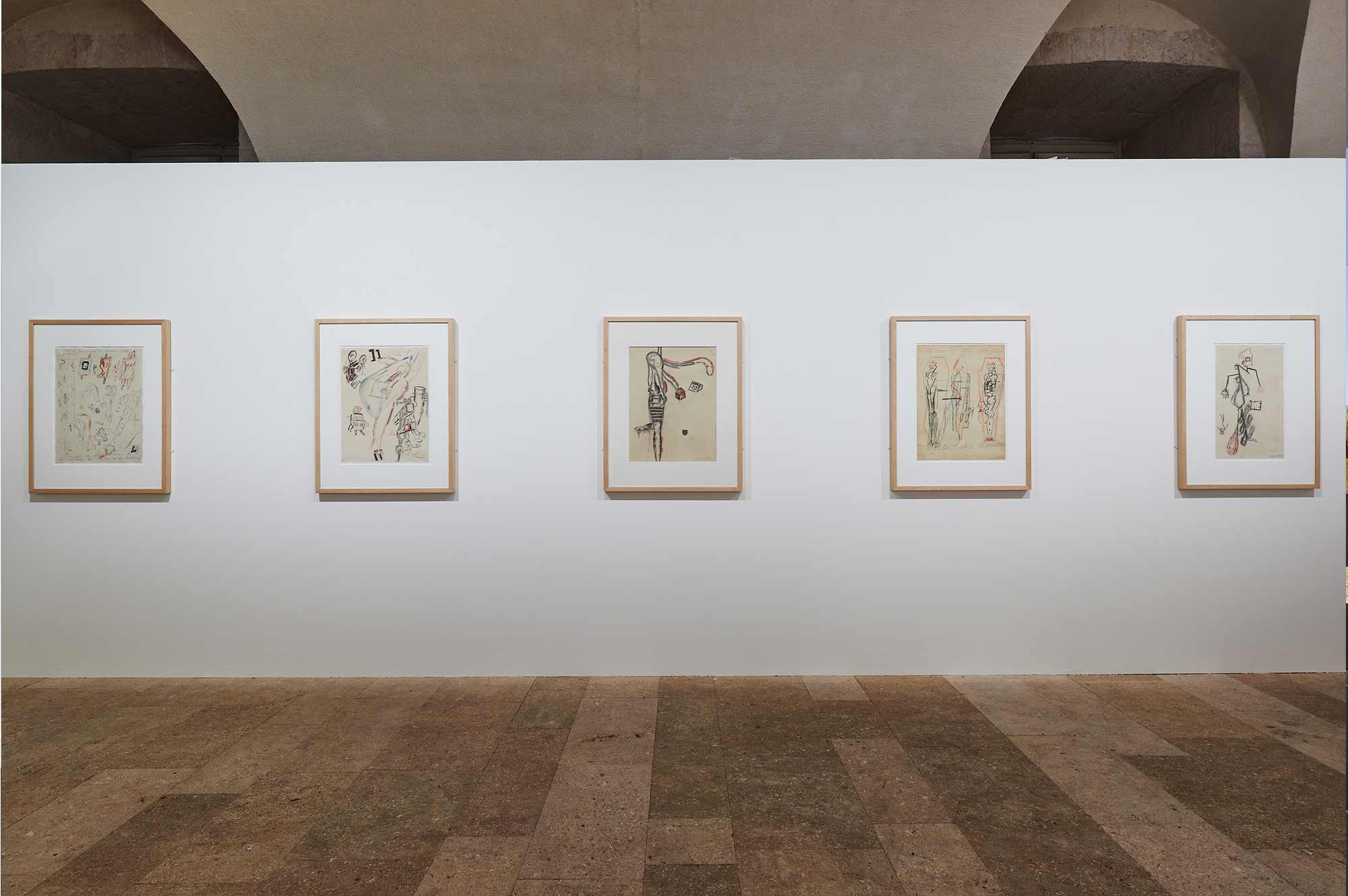Antonin Artaud (1896 – 1948, FR), dramatist, poet, actor, theorist
Never real and always true…, January 1945
Pencil and coloured chalk on paper
The fishy mix of shapes in the tower of Babel, February 1946
Pencil and coloured chalk on paper
The Totem, December 1945 - February 1946
Pencil and coloured chalk on paper
Rebellion of the Angels from Limbo, Januray - February 1946
Charcoal and coloured pencil on paper
The man and his pain, April 1946
Pencil and coloured chalk on paper
© Collection Musée Cantini, Marseille.
Following various bouts of nervous disorders, Antonin Artaud stated in 1921 that his problem was that of never managing to possess his mind ‘in its entirety’. In order to undermine the notion of a universalised rational mind, Artaud resorted to myths and magical thinking. La Bouillabaisse de formes dans la tour de Babel, for example, refers to the myth of the tower of Babel and the idea of a universal language. It was executed in Rodez while Artaud was constructing his own language. Meanwhile, the image in Le Totem originated in the idea of a wand come walking stick, which he got from his friend René Thomas and was believed to have been mentioned in the prophecies of St Patrick.
With Artaud, the artist as seer crystallised into the figure of the artist as pure victim of his own consciousness, while the links between spirituality, life, art and suffering became his leading themes. In his own words, L’Homme et sa douleur exemplifies ‘a sort of diminished copy of a sensation that has passed through him and that he wanted to draw naked.’ It shows a body reduced to a skeleton collapsing under pain as well as its double drawn on the left bottom of the page.









 Dessins, 1945- 1946, Antonin Artaud © Collection Musée Cantini, Marseille. Photo ©Jeanchristophe Lett /Manifesta 13 Marseille
Dessins, 1945- 1946, Antonin Artaud © Collection Musée Cantini, Marseille. Photo ©Jeanchristophe Lett /Manifesta 13 Marseille